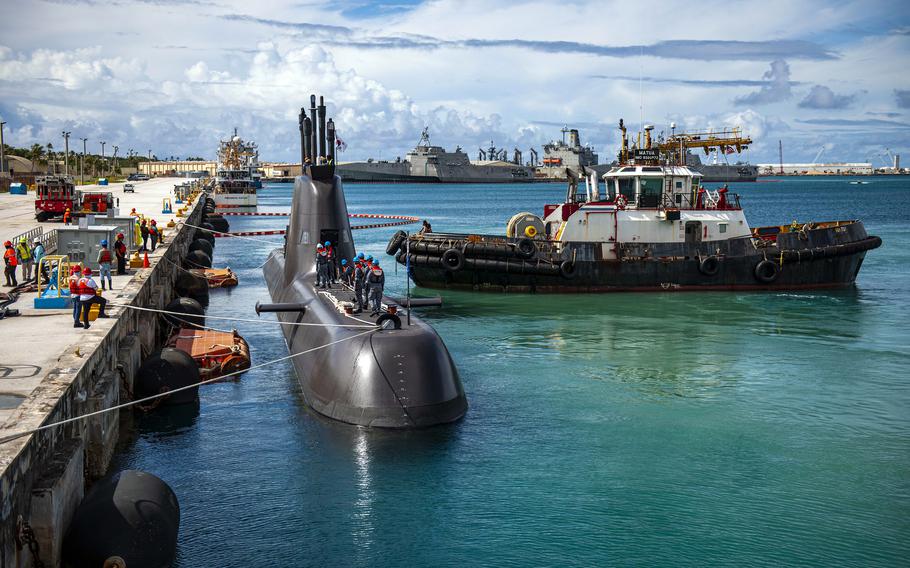
The South Korean navy submarine ROKS Jeong Ji moors at Naval Base Guam, Sept. 28, 2023. (Justin Wolpert/U.S. Navy)
U.S. and South Korean submarines trained together off the coast of Guam over the weekend to enhance their teamwork when hunting enemy submersibles, according to U.S. Indo-Pacific Command.
The USS Topeka, a nuclear-powered fast-attack sub, and South Korea’s diesel-electric ROKS Jeong Ji took part in the biennial Silent Shark exercise Sunday “to enhance the use of submarine tracking and engagement as a tool to maintain stability throughout the Western Pacific region,” the command said in a news release Monday.
South Korean navy commander Kim Il-bae added: “We will deter enemy aggression and are ready to firmly defend our seas.”
Bilateral exercises appear to have kicked into high gear after President Joe Biden and South Korean President Yoon Suk Yeol agreed to strengthen their military ties.
The leaders said they would usher in a new era of their 70-year alliance following their White House summit in April and a trilateral summit four months later with Japanese Prime Minister Fumio Kishida at Camp David, Md.
“These next 70 years of the U.S.-[South Korea] alliance will be the brightest yet,” the presidents said in a joint statement on April 26.“President Biden and President Yoon reaffirmed their joint commitments to working tirelessly to broaden and deepen our ties as an alliance in action toward the future.”
In September, nine U.S. and South Korean ships carried out a three-day antisubmarine and maritime shooting exercise in the Sea of Japan, or the East Sea.
Those drills, which included the guided-missile destroyer USS Shoup and guided-missile cruiser USS Robert Smalls, served “as momentum so that the [South Korean] and U.S. naval forces can effectively deter and respond to North Korea’s advancing nuclear and missile threats,” South Korean Rear Adm. Kim Inho said in a Sept. 25 statement.
North Korea has fired 21 ballistic missiles — four of them intercontinental range — in 14 days of testing so far this year. The communist regime last launched two short-range ballistic missiles that flew toward the Sea of Japan on Sept. 13.
Biden and Yoon also agreed on the timely deployments of strategic U.S. military assets to the Korean Peninsula. This materialized in July when the USS Kentucky sailed to Busan, marking the first time a nuclear-capable U.S. submarine has visited South Korea in 42 years.
A nuclear-capable U.S. bomber landed at an international airport about 60 miles south of Seoul on Oct. 17, marking the first time a B-52 Stratofortress has touched down on South Korean soil in at least 30 years.
On Sunday, that bomber participated in an unprecedented aerial drill alongside U.S., South Korean and Japanese fighter jets.